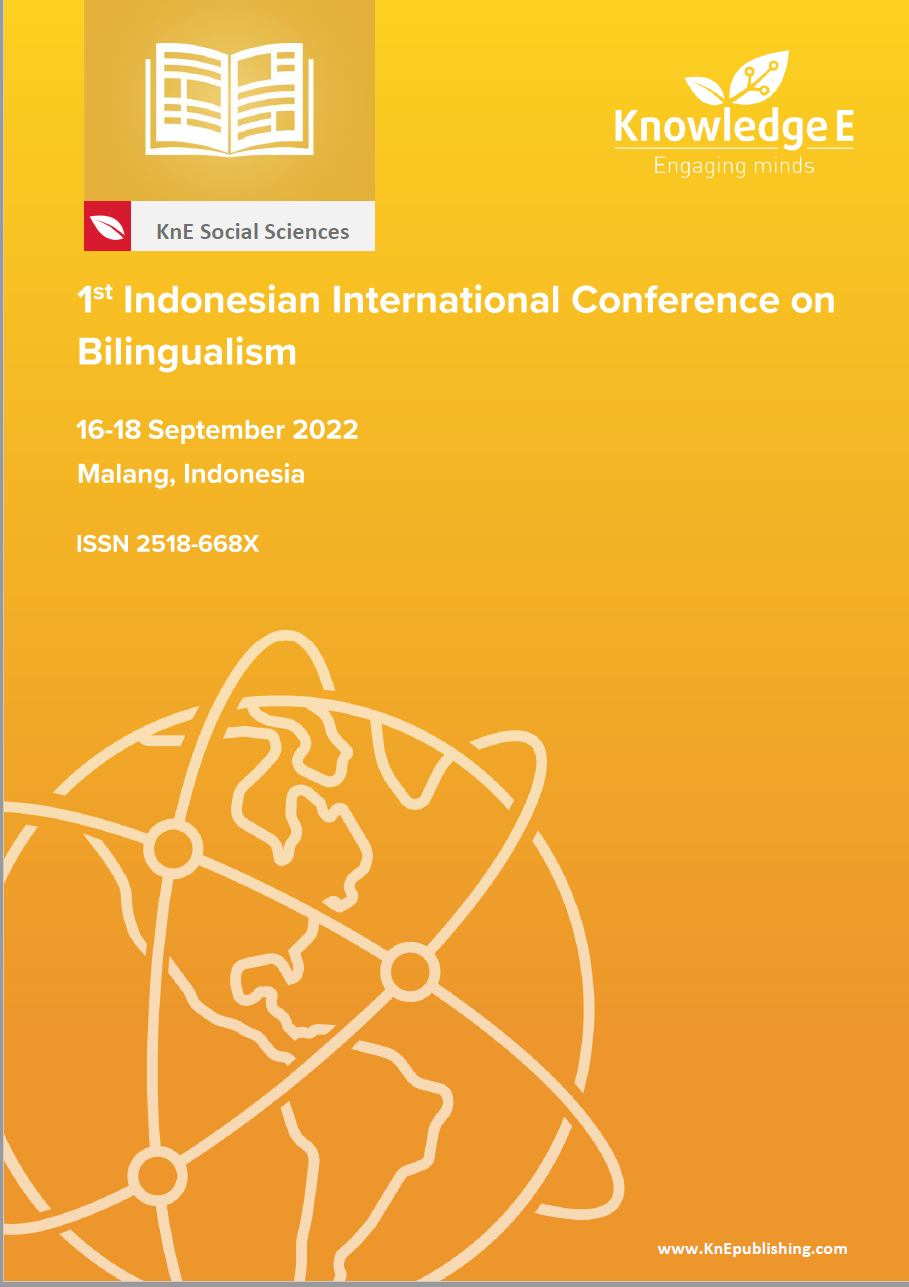Indonesian Tour Guide's Bilingual Experiences in Malang: A Narrative Inquiry Study
DOI:
https://doi.org/10.18502/kss.v8i7.13238Abstract
`The purpose of this study was to explore the experiences of a bilingual Indonesian tour guide in guiding foreigners coming to Malang, Indonesia. More specifically, this study intended to explore the challenges and strategies in learning and applying two languages. Narrative inquiry is employed in this study to examine the participant’s experiences before and after learning and practicing two languages. This study used a qualitative research design in which the data is described in the form of a description. The research instrument was in the form of open-ended interviews. The participant of this research is a senior tour guide who lives in Malang. The findings of this narrative inquiry indicated that less practice could hinder the participant in applying the two languages and hinder the participant from communicating with foreigners. To cope with the challenges, the participant applied communication strategies by self-taught learning and practice. The study suggests it is crucial to always use and practice the languages, especially for native speakers, to master them.
Keywords: bilingualism, learning strategies, narrative inquiry
References
[2] Az-Zahra AS, Kirana AW. Cross-cultural differences that occurred during the trip provided by Malang tourism information center and strategies to cope with it. Alphabet. 2021;4(1):19–30.
[3] Braun V, Clarke V. Using thematic analysis in psychology. Qual Res Psychol. 2006;3(2):77–101.
[4] Çetinkaya M, Öter Z. Role of tour guides on tourist satisfaction level in guided tours and impact on re-visiting intention: A research in Istanbul. European Journal of Tourism. Hospitality and Recreation. 2016;7(1):40–54.
[5] Chan A, Hsu C, Baum T. The impact of tour service performance on tourist satisfaction and behavioral intentions: A study of Chinese tourist in Hong Kong. Journal of Travel and Tourism Marketing. 2015;32(1–2):18–33. https://doi.org/https://doi.org/10.1080/10548408.2014.. 986010
[6] Cohen E. The tourist guide: the origin, structure and dynamics of a role. Ann Tour Res. 1985;12(1):5–29.
[7] Creswell JW, Poth CN. Qualitative inquiry & research design: Choosing among five approaches. 4th ed. Los Angeles: SAGE; 2018.
[8] Geva A, Goldman A. Satisfaction measurement in guided tours. Ann Tour Res. 1991;18(2):177–85.
[9] Holloway J. The guided tour: A sociological approach. Ann Tour Res. 1981;8(3):377– 402.
[10] Huang S, Hsu CH, Chan A. Tour guide performance and tourist satisfaction: a study of the package tours in Shanghai. J Hosp Tour Res (Wash DC). 2010;34(1):3–33.
[11] Nurjaleka L, Supriatnaningsih R. In the process of being bilingual of an Indonesian child: the phenomena of code-switching, language mixing and borrowing. Register Journal. 2021;14(1):99–120.
[12] Nursanti Y. Students’ perception of teacher’s bilingual language use in an English classroom. J Eng Educ. 2016;4(1):159–76.
[13] Pond K. The professional guide: Dynamics of tour guiding. New York: Van Nostrand Reinhold; 1993.
[14] Priandani ND, Tolle H, Hapsani AG, Fanani L. Malang historical tourism guide mobile application based on geolocation. ACM International Conference Proceeding Series. 2017;98–101.
[15] Randall C, Rollins R. Visitor perceptions of the role of tour guides in natural areas. J Sustain Tour. 2009;17(3):357–74.
[16] Wallner K. The effects of bilingualism on language development of children. Communication Sciences and Disorders: Student Scholarship & Creative Works. 2016;1–32.
[17] Weiler B, Yu X. Dimensions of cultural mediation in guiding Chinese tour groups: implications for interpretation. Tour Recreat Res. 2007;32(3):13–22.

